The significance of the tooth-organ relationship in diagnosing functional and organic interferences
Dr. med. Silvia Schuder, Dentist and Naturopath, Sonneberg
BIORESONANCE METHOD – A SMARTER APPROACH TO DIAGNOSIS AND THERAPY
The aim of holistic, alternative curative treatments is to restore health by activating the body’s self-regulatory powers. The healing process always takes place via the system of basic regulation, an open, highly integrated biological system, through communication between the cells. Through its ramified network of ground substance the connective tissue plays a key role and, thanks to its strong water-binding and ion exchange properties, enables the chemical, energetic exchange of information to take place.
The ground substance runs through the entire organism and forms the sounding board for all interactions in the organism. This represents not only the oldest principle of communication in the body in phylogenetic terms, but is also provides the anatomical and physiological basis for holistic medicine. Each organic and inorganic substance transmits information in the form of electromagnetic oscillations or frequency patterns via the ground substance system. Through bioresonance this also enables the hidden stresses such as allergens, chemical substances, micro-organisms, bacteria, viruses etc to be safely diagnosed and eliminated which in turn activates the body’s powers of self-regulation.
This smart diagnostic and therapeutic approach, as I have called it, distinguishes this alternative curative method of bioresonance therapy from other curative treatments. The organism’s regulatory ability can only be activated once therapy blocks have been eliminated. This is the main reason why other alternative procedures often only bring temporary relief from symptoms and fail to bring about a complete recovery in most instances. In conventional medicine, which relies heavily on the treatment of symptoms, often only those measures which attenuate and stress the system of basic regulation are used (e. g. antibiotics, glucocorticoids, antidepressants, chemotherapeutics and so on). The body’s self-regulatory ability is blocked and this leads to the condition becoming chronic over time. Conventional dentistry falls into this same trap, of course.
THE FUNDAMENTALS OF THE TOOTH-ORGAN RELATIONSHIPS
The BICOM dental therapist is able to gain diagnostic insights into functional and organic interfereences which often remain inaccessible to other specialists.
A reduction in the molecular, pathological frequency patterns is by no means a local occurrence and instead takes place through a complex system of energy highways known as meridians. TCM identifies twelve regular and eight extra meridians. The meridians are arranged in a particular order. According to traditional thinking energy flows through them in a 24-hour cycle. They also connect to the extremities, allowing energy balance. The meridians are distributed symmetrically across the entire body. They are connected internally to the organs and externally to the extremities, the skin and the sensory organs. In this way the body forms one organic unit. This is fundamental in understanding the tooth-organ relationship in diagnosis and therapy.
EXAMPLES FROM ACTUAL PRACTICE
In the following section of my paper I will describe two examples taken from dental practice in which teeth were found to be the foci for physical complaints in other areas.
46th International Congress for BICOM Users, 28 to 30 April 2006 in Fulda
For testing and therapy I used the Combined Test Technique which allows concealed stresses and their interactions to be recognised and treated very quickly.
Case 1
Patient, aged 66: recurrent pain in left knee.
To begin with I used the knee joint arthrosis and knee joint disorder programs as treatment, albeit with limited success.
Further options were considered, whereby treatment did in fact bring about more lasting success, and these are documented as follows.
1st session:
Basic therapy
Follow-up therapy 330 (stomach meridian acute-inflammatory)
Following this, there was a significant improvement.
Search for the focus of the infection using the Combined Test Technique:
5 elements test set with program 192:
Water element stress
Teeth
Bacterial stress
Chronic stress
Teeth test set with program 192 / 191:
Stress 27
Bacterial stress
Dental foci
Energy block
Chronic stress
Bacteria test set with program 192:
Streptococcal
Staphylococcal
Subsequent therapy in the following order:
Basic therapy
Follow-up therapy 431, 930, 978Elimination 27 (yellow ampoule) and pink ampoules after testing therapy amplification and time with program 192
Stabilisation using those ampoules from the 5 elements test set that had tested positively.
The patient was free of symptoms just hours later.
Case 2
Patient, aged 62: Therapy-resistant hypertonia (non-pathological clinical laboratory values, low-risk lifestyle).
The application of positively tested therapy programs (blood pressure too high) 270, 801 proved unsuccessful.
Search for the focus of the infection using the
Combined Test Technique:
5 elements test set with program 192:
Water element stress
Teeth Bacterial stress
Chronic stress
Wood element stress
Liver
Viral stress
Chronic stress
Teeth test set with program 192:
Stress 43
Bacterial stress
Dental foci
Chronic stress
Viral/fungi test set with programs 192 / 191:
Hepadna viruses
Parvo viruses
Picorna viruses
Anti-virus
Since the water element takes priority over the wood element, therapy is carried out in the following order:
Basic therapy
Follow-up therapy 431, 910, 978Elimination 43 (yellow ampoule) with corresponding pink ampoules with program 192
Stabilisation using those ampoules from the 5 elements test set that had tested positively.
After one week no further trace in the water element and therefore elimination of the viruses causing stress to the liver.
Basic therapy
Follow-up therapy 431, 978Elimination of viruses with program 191,
Antivirus with program 192Stabilisation using those ampoules from the 5 elements test set that had tested positively.
After the final therapy session the blood pressure was stable within the normal range.
Conclusions: Originally, bacterial toxins spreading from tooth 43 resulted in increased stress on the liver and, with liver function impaired, this in turn opened the way for further viral colonisation. The viral stress acting on the liver led directly to hypertonia.
Before beginning therapy, consideration should always be given to eliminating any possible scar interference fields and checking the elimination organs. In addition, the two cases illustrated here clearly demonstrate that with purely symptom-based therapy programs often it is not possible to achieve any far-reaching improvement in the condition. Generally speaking, it is important to ask three questions when assessing each case – how, why and where from? Failure to address these questions is the reason why other alternative curative treatments such as acupuncture and neural therapy often fail to achieve any success beyond the initial therapy stage.
Dental complaints without dental cause or conventional medical explanation
In this the last section of case histories we consider one highly interesting aspect which every practising colleague will have experienced, namely that it is not uncommon to find that for a wide range of dental complaints there is no attributable dental cause or conventional medical explanation. In all the cases dental problems were the only indication of the functional and organic disturbances present, of which neither the patient’s GP nor the patient himself were aware. My observations show that these cases where there is an organ-tooth relationship are found much more frequently in BICOM dentistry than those cases illustrated in the first section where there is a tooth-organ relationship, i.e. the remote action of dental foci on organ structures.
From the point of view of accurate diagnosis, besides considering the course of meridians and checking meridian function, it was found time and again that the clear overview provided by the tooth relationship zones also played an important role.
Testing to find the focus of the infection was carried out in the same way for all cases:
Teeth test set
5 elements test set,
further test sets depending on the stresses found,
which were then used in administering therapy.
Case 4
Patient, aged 44: For some time, persistent bleeding gums at numbers 14, 15; parodontal surgery unsuccessful.
• Degenerated cells – lung.
Note: In cases where curettage has been carried out professionally, yet problems persist in a tooth or group of teeth, an organ is almost always the underlying cause!
Case 5
Female patient, aged 68: Burning pain with localised change to mucous membrane in toothless alveolar ridge around number 24; experts could find no causes for the symptoms.
• Degenerated cells – lung.
After treatment there were fewer changes in the mucous membrane. The patient was symptom-free.
Case 6
Female patient, aged 43: Indefinable recurring pain in number 33.
• Degenerated cells – liver.
Case 7
Female patient, aged 67: stubborn and persistent pain in number 44 and in toothless area 45 of the jaw.
• Degenerated cells – pancreas.
Clinically neutral result indicated malabsorption problems.
Case 8
Patient, aged 25: recurring problems with vital tooth number 27 (unclear, pulpitic pain, fillings repeatedly lost marginal adaptation after a short time, problems with bite).
Stomach meridian, acute-inflammatory
Stomach: bacterial stress with helicobacter pylori.
Case 9
Female patient, aged 44: recurring problems with vital tooth number 46 (hypersensitivity, occasional bite problems).
Intestinal mycosis.
After further treatment of the fungal stress in both knee joints not only did the pain in her tooth disappear but also her persistent knee joint problems. The patient had already undergone one unsuccessful knee joint operation.
Case 10
Patient, aged 45: Pulpitic symptoms in correctly root-filled tooth 16, hyperaesthesia.
Stomach meridian acute-inflammatory
Stomach: bacterial stress with helicobacter pylori.
The presence of a hypochromic anaemia (iron-deficiency anaemia) was clinically verified. The patient was only taking an iron preparation. Given the iron deficiency a sub-acute chronic gastritis was suspected (patient did not experience any stomach problems).
Summary
In summary we can see that by treating the underlying disorder we can also put an end to the dental problems, thus helping the patient on two counts.
CONCLUSION
In conclusion it should be noted that often the place where pain is felt is not actually the source of the pain. Lateral thinking is required in order to really help the patient. It is also no coincidence that certain teeth develop caries and other such symptoms and yet show no signs of improvement even with all the diagnostic and therapeutic measures that modern dentistry has to offer.
Crucially important in this respect are the energetic influences of disturbed organs or physical structures acting via the meridian system. The teeth act as it were as “fuses” within the meridian system; where there is decompensation in the corresponding meridian the “fuses” are failing to do their job.
Bioresonance therapy makes it much easier to move away from the local determinism of conventional medicine and embrace an holistic approach. Healthy, grateful patients and not least a high degree of specialist knowledge and personal development are the rewards awaiting those who practise bioresonance therapy.
